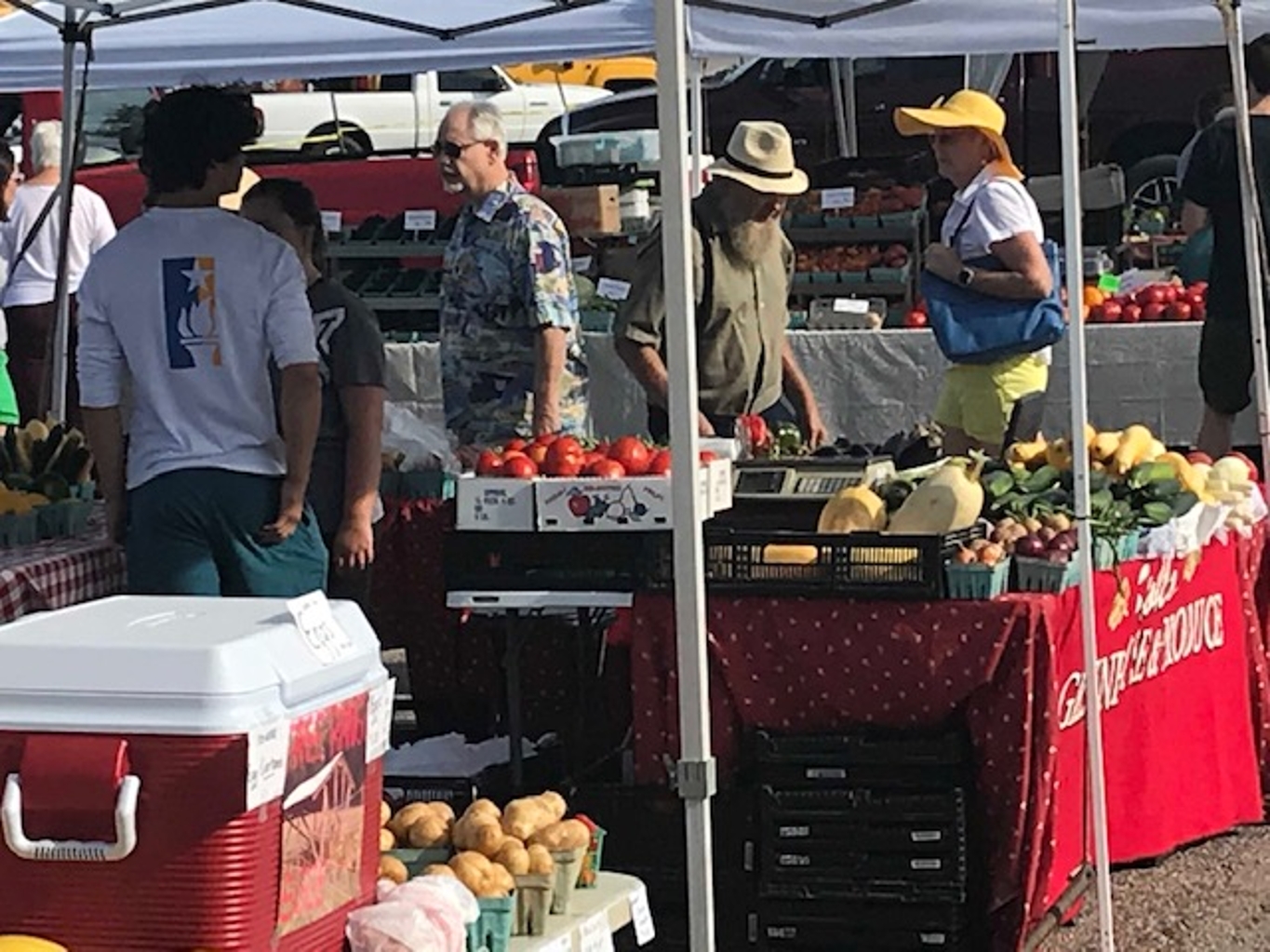
(Tyson Foods/Wikimedia Commons)
Meat isn’t going to disappear from supermarkets because of outbreaks of the coronavirus among workers at U.S. slaughterhouses. But as the meat plants struggle to remain open, consumers could face less selection and slightly higher prices.
Industry leaders acknowledge that the U.S. food chain has rarely been so stressed and that no one is sure about the future, even as they try to dispel concerns about shortages.
On Sunday, the meat processing giant Tyson Foods ran a full-page advertisement in the New York Times and other newspapers outlining the difficulty of producing meat while keeping more than 100,000 workers safe and shutting some plants.
“This means one thing – the food supply chain is vulnerable,” the statement said. “As pork, beef and chicken plants are being forced to close, even for short periods of time, millions of pounds of meat will disappear from the supply chain.”
Company spokesman Gary Mickelson said the Tyson family thought it was important to explain their perspective.
“The letter encourages government leaders to unite to address food supply chain challenges,” Mickelson said. “We are taking a proactive approach to balance safety and production by moving aggressively with testing and plant closures when necessary.”
Tyson Foods Inc. announced April 22 that it would temporarily close its meatpacking plant in north-central Indiana after 146 employees tested positive for cornavirus. The Tyson Fresh Meats plant in Logansport produced 3 million pounds of pork daily.
READ MORE: Indiana Meat Plant Closing After Workers Contract Virus
Then on April 24, the Indiana Packers Corporation [IPC] announced it would suspend operations beginning April 27 at its Delphi processing facility.
COVID-19, the disease caused by the virus, has infected hundreds of workers at meat-processing plants and forced some of the largest to close and others to slow production. While the output at beef and poultry plants has diminished, pork plants in the Midwest have been hit especially hard. The viral outbreaks have persisted despite efforts by the meat companies to keep workers at home with pay if they become sick.
The 15 largest pork-packing plants account for 60 percent of all pork processed, so when even one of those plants closes for days or weeks, the consequences ripple across the industry. That has become abundantly clear with two of the nation’s biggest plants now closed: Tyson suspended operations at its plant in Waterloo, Iowa. And Smithfield Foods halted production at its plant in Sioux Falls, South Dakota. Each plant can butcher nearly 20,000 hogs a day. Some plants have reopened days after cleaning.
The result is that the nation’s pork processing capacity had declined by about 25% as of last week, said Steve Meyer, an industry economist with Kerns and Associates in Ames, Iowa.
Sarah Little, a spokeswoman for the North American Meat Institute, an industry trade group, said: “It’s down across the board right now, so the next couple of weeks we should see how the system works. It’s never been tested like this before.”
A beef production plant in Green Bay, Wisconsin, is the latest to shut down because of infections among employees. JBS USA said the JBS Packerland plant, which employs 1,200, would be closed temporarily. As of Monday, 255 employees at the plant tested positive for COVID-19, said Claire Paprocki, a spokeswoman for the county health department.
Nationally, although the reduced meat supply is expected to cause consumer prices to rise, expectations are that the increases will be slight. The U.S. Department of Agriculture said late last week that it expects beef prices to climb 1% to 2% this year, poultry as much as 1.5% and pork between by from 2% and 3%.
The agency acknowledged that consumer buying patterns change weekly and that some products face supply-chain disruptions that could affect prices. But the USDA said its planned $3 billion purchase of fresh produce, dairy and meat should help stabilize prices. The government will work with food distributors to provide the purchased products to food banks, community and faith-based organizations and other nonprofits serving the needy.
The United Food and Commercial Workers International Union, which represents 1.3 million food and retail workers, said last week that 10 U.S. food-processing and meatpacking union workers in the U.S. have died and that an estimated 5,000 are sick or have been exposed to the virus while working near someone who tested positive.
Marc Perrone, the union president, said 13 plants in Indiana, Iowa, Minnesota, Missouri, Pennsylvania, South Dakota and Wisconsin and Alberta, Canada, have been closed at least temporarily because of the pandemic. Those union plants represent about 10 percent of beef production and 25 percent of pork production, the union said.
READ MORE: Meatpacking Plant Closures Hurting Some Indiana Pig Farmers
The union is urging state and federal officials to ensure that workers have access to protective equipment, mandate social distancing at work and halt federal waivers that allow faster line speeds.
Many employees of the meatpacking plants fear going to work, said Margarita Heredia, who has worked at the JBS pork processing plant in Marshalltown, Iowa, for 11 years. She joined a UFCW union call with reporters to discuss the pandemic’s effects on workers.
Heredia credited the company with improving sanitation, including treating hallways and common areas with bleach and placing hand sanitizer stations around the plant. JBS also now takes workers’ temperatures and encourages those who are sick to stay home. But she said the company increased pay by $4 an hour from April 20 through May as an incentive for healthy employees to go to work.
“Even then, we’re still shorthanded, but we are trying to do our best,” she said.
The national slowdown in meat processing has surfaced in federal statistics. The daily cattle slaughter for the week of April 13 fell nearly 24 percent from the same period a year ago. Pig slaughter was down 13 percent. And given the most recent plant closures, those figures have likely fallen further.
So far, the meat-processing industry has been able to shift production to open plants to keep a stream of meat moving through the supply chain, said Little, of the meat institute. Some plants that closed have reopened after deep cleanings.
“When one plant goes off-line, the others in the region can try and pick up the slack,” Little said.
The situation would be more dire if not for record amounts of meat in cold storage, though much of the meat was intended for restaurants that now are largely closed.
The USDA last week reported 921 million pounds of chicken in storage and 467 million pounds of boneless beef, including hamburger, roasts and steaks. Before much of that meat could be sold at markets, it would need to be repackaged because restaurants buy in greater bulk than individuals. Some of the meat would need to be cut by grocery store meat cutters and packaged for customers to take home.
In late March, the USDA eased restrictions to allow for meat that had been intended for commercial food use to be diverted into the grocery store channels for consumers The industry sought these changes in mid-March after brief meat shortages caused by the coronavirus panic sent people scurrying to grocery stores.
Industry reports indicate that fresh pork purchases surged 102 percent for the week ending March 22 compared with the same period a year earlier. Beef sales were up 91 percent. Chicken purchases grew by about 71 percent earlier in March before slowing. Still, chicken, pork and beef purchases are still about 30 percent above year ago levels in recent reports.
“By and large, there’s been enough food,” said Jayson Lusk, an economist at Purdue University. “You might not get your exact variety that you want or the exact type you want, but there’s been food available if you have the money to buy it.”
For the latest news and resources about COVID-19, bookmark our Coronavirus In Indiana page here.










